Jorge wasn´t able to make it today (he had rehearsal for election day vote counting) and Peter had to work, so Galo and I ran the workshop. Like in previous days, participants arrived and checked the wiki. Today we were a bit scared about how few participants showed up. When we arrived at 9am, only Caro was there. Nevertheless, a new participant joined the group. In a way, it was easier for us to get her up to date in a crash course in blogging with almost no other participants: Luz Mabely was able to open her blog, a flickr account, write an introductory article and also explore a bit, all we needed was for her to open her google reader, but I believe that in a future lesson she´ll be able to do that as well. When we had finished, Ángelo and Yennifer had arrived, so Caro and Ángelo went to take pictures of the neighborhood and then Yenni went out with Luz Mabely.
Caro was inspired, as she said herself: she wrote 4 articles in that hour before heading out to take pictures. Crónicas de la lejanía, a critique on Good Charlotte in English, she wrote A story of MY barrio , and also did the task of the day: inReality she uploaded the picture she took and wrote about it:
 Estaciones hermosas, vagones impecables, limpieza por doquier. Derroche, luces, clase, estilo; pero más allá, se ven los techos de lata, las calles dañadas, el río sucio. Pobreza.
Estaciones hermosas, vagones impecables, limpieza por doquier. Derroche, luces, clase, estilo; pero más allá, se ven los techos de lata, las calles dañadas, el río sucio. Pobreza.
Beautiful stations, impeccable cars, everything is clean. Abundance, lights, class, style; yet, beyond, you can see the tin roofs, the damaged streets the dirty river. Poverty.
Ángelo was also inspired, so he decided to skip lunch just to be able to finish his article about the historical icon of the 80´s: the Renault Master 4 :
 Lastimosamente la gente de mi generaciòn estamos acostumbrados y en demaciados casos tocados por diferentes hechos ocurridos en los años 80, època de guerra, lucha,liberales,conservadores, embajadas,palacios,camisas de chaliz, zapatos zodiac, attaris 2600 y porsupuesto el juguete preferido del patròn el MUNRA el casi HIGHLANDER de los autos en Medellin el infamous RENAULT MASTER 4.
Lastimosamente la gente de mi generaciòn estamos acostumbrados y en demaciados casos tocados por diferentes hechos ocurridos en los años 80, època de guerra, lucha,liberales,conservadores, embajadas,palacios,camisas de chaliz, zapatos zodiac, attaris 2600 y porsupuesto el juguete preferido del patròn el MUNRA el casi HIGHLANDER de los autos en Medellin el infamous RENAULT MASTER 4.
Sadly, those of my generation are used to and in many cases influenced by the different events that took place in the 80´s: a time of war, fights, liberals, conservatives, embassies, palaces, silk shirts, zodiac shoes, Atari 2600 and of course the patrón's [Pablo Escobar] favorite toy: the MUNRA, almost the HIGHLANDER of the cars in Medellin, the infamous RENAULT MASTER 4.
When Yenni and Luz Mabely came back, they were accompanied by Andrea, whom they found on the way in. Andrea took pictures, but wasn´t able to upload them to the computer because the cables we have don´t match her camera, however, she did write the article My work in Santo Domingo:
…hoy cuando subí en el Metrocable, mis compañeros de viaje eran unas personas de Bogotá, las cuales estaban sorprendidas y gratamente encantadas con lo bonito que se ve la ciudad desde este medio de transporte (Metrocable), de pronto una de las señoras dijo: esas Terrazas tan bonitas, que plantas, en ese momento mi corazón latió mas fuerte y como si la conociera y con un orgullo que se irradiaba en mis ojos, empecé a contarle a ella y a todos los presentes que yo había participado en ese gran proyecto que se llama Solares Ecológicos y al llegar a la estación Anda Lucia, les dije miren a la izquierda esa terraza es de la señora Felicidad, ella y su familia aprovecharon al máximo el proyecto y ahora tienen ese jardín con aromaticas, hortalizas y plantas, los presentes solo se miraban entre ellos y con un signdo de afirmativo con sus cabezas, decian eso es lo que necesitamos en este país que la gente haga cosas provechosas y así no tengan tiempo de pensar en la guerra.
Today when I got up in the Metrocable, my car companions were some visitors from Bogota, who were pleasantly surprised and enchanted with how pretty the city looks from this means of transportation (Metrocable), suddenly one of the women said: those rooftops are so nice, look at those plants, at that moment my heart beat faster and as if i had known her from before and with pride irradiating from my eyes, I began telling her and all of the others in the car that I had participanted in a great project called “ecological rooftops”. When we got to the Andalucia station I told them to look to their left, and said that rooftop belongs to Felicidad, she and her family took the greatest advantage from the project and now they have that garden with medicinal herbs, vegetables and plants, those present looked at each other and with nods said that this is what we need in this country, for people to do fulfilling things and not have time to think of war.
Many pictures were taken!
Luz and Yenni didn´t have enough time to publish their articles. They tried to, but the system would collapse every time they tried to publish something, they agreed to do it later on this week. Luz Mabely´s blog is called mi blog, and here is her flickr account. Yennifer wrote about a class trip during the week, so take some time to go and visit and learn what comes out of combining cold weather, tents and teens.
Then we went to eat something. Diana and Liseth, who are doing their thesis based on our project in Santo Domingo, arrived to interview the participants. We had a brainstorm for ideas of video projects to do on the next workshops and Caro documented the results::
For the next workshop, they decided to do idea number 3: record noises, and also the sounds these noises make. The free hug project will wait until we get the costumes.
At the end we weren´t able to get the press passes for Alta Voz, or to meet the Zampues girls during the two weeks. Let´s blame it on Phonetag. However, since Angelo was going to the AltaVoz concerts, we lent him the camera and lets hope he´s able to take pictures of the concerts and share them with the rest of us.
In the meantime, take a look at pictures the participants took in Hiperbarrio´s flickr, pictures are titled with the photographers names. We already reached the 200 limit on the free flickr account: anyone interested in giving us a Pro Account? 😉
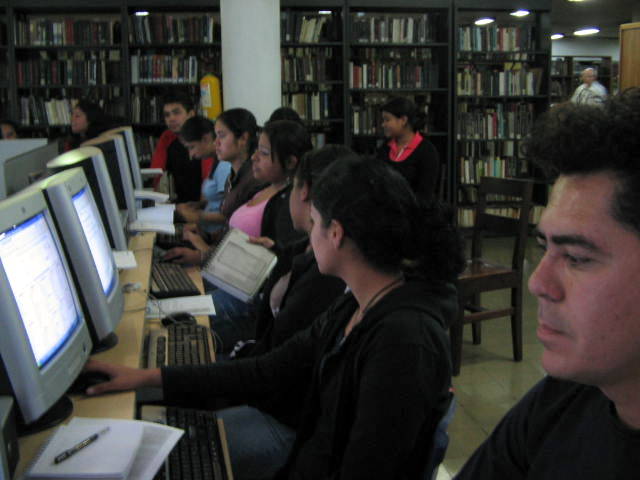

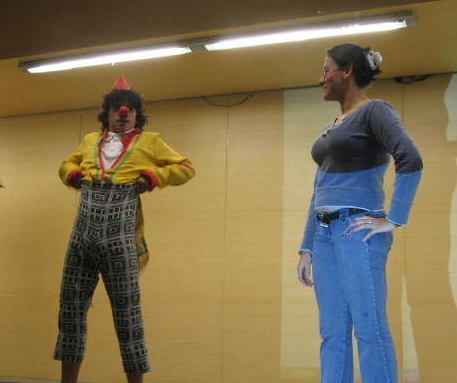

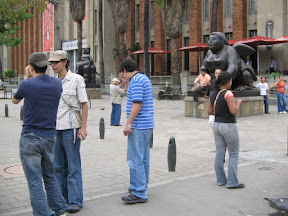
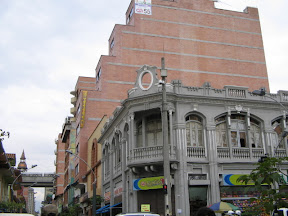
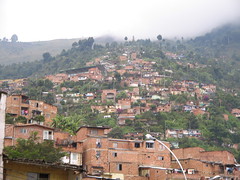
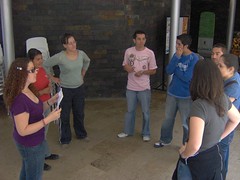

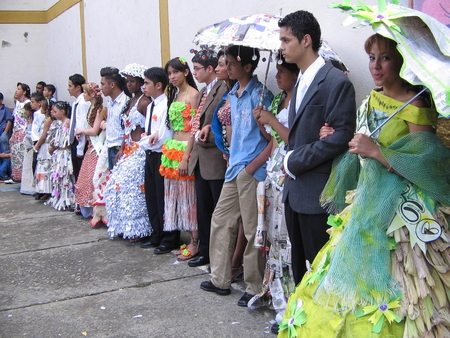
 Estaciones hermosas, vagones impecables, limpieza por doquier. Derroche, luces, clase, estilo; pero más allá, se ven los techos de lata, las calles dañadas, el río sucio. Pobreza.
Estaciones hermosas, vagones impecables, limpieza por doquier. Derroche, luces, clase, estilo; pero más allá, se ven los techos de lata, las calles dañadas, el río sucio. Pobreza.